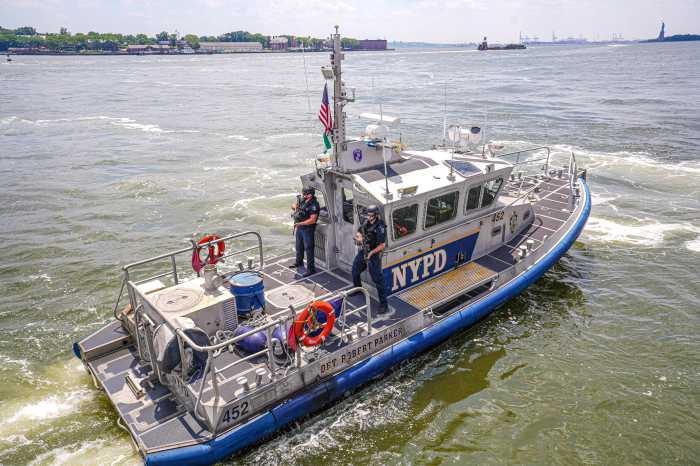Astoria resident Michelle Tessier is nobodys damsel in distress, but she might just end up your knight in shining armor someday. With almost 10,000 fires occurring yearly in Queens, the need for heroes has not diminished and the latest wave of those answering the call of the New York Fire Department may surprise you.
Close to 450 women passed the FDNYs written exam in December, and since then have been training for the grueling physical exam this summer. They do cardio, strength, endurance and flexibility training in preparation for a test that will not differ in any way from that taken by male candidates. In fact, women have been serving as career firefighters and officers for more than 25 years.
Tessier has wanted to become part of that tradition since she was a little girl. She grew up around the corner from a volunteer firehouse and when the alarm would go off, she and her friends would jump on their bikes and race to find the fires.
"I just loved the excitement and teamwork," she said. "How the guys all looked out for each other. The fact that they would run into this building with flames coming out was incredible to me."
Luckily, thanks in part to Tessier, those brave women who have dedicated their mornings, afternoons and weekends to pumping iron have not had to go it alone. The New York Sports Club donated memberships to both female and male hopefuls and provides training specific to the physical exam. Tessier, who works one day a week at the Curves gym in Astoria, mentioned to the owners of the facility that she was training to take the exam, and they agreed to let the women train for free on Saturdays.
"Phil and Nancy who own Curves have been really fabulous. They have a womens gym so they support womens efforts. For them to open up their doors to almost 500 women who have trained for the exam is amazing," Tessier said.
Theyve also had help from current and retired firefighters who have generously given their time to teaching the candidates the ins and outs of the events on the exam. The women are training twice a week on actual test equipment with the United Womens Firefighters at the Randalls Island Fire Academy until July 6.
"Id like to emphasize how fabulous the firefighters who have been helping us are," she said. "They come out in the rain for four hours on a weekday to help us pass this test. Wed be there ourselves if they didnt show up. And its not just women; we have male firefighters who help us, too. Its just great."
Perhaps most important is the sense of camaraderie that has developed among the women through the preparation process. Unlike many of their male counterparts who prefer to train alone, the female candidates have been supportive of each other, bolstering each others confidence and cheering each other on.
"The girls are really great. Its a bunch of girls who have been training together since the beginning and its touching," Tessier said. "When one of us is about to give up, the others will be right there. You cant give up when you have four girls chanting your name behind you."
The hopefuls come from all walks of life, and are of all shapes, sizes and fitness levels. Some have quit their jobs to focus on training for the exam, but others work long hours and care for children. All, however, are extremely dedicated to saving lives and helping people, though their reasons may diverge widely. Many of the women grew up thinking the Fire Department was a men-only world and only discovered a short time ago that becoming part of the FDNY was an opportunity open to them. One candidate cited the events of September 11 as her main motivation in wanting to become a firefighter.
"Ive wanted to do this since September 11. Ive been working in offices for the last 10 years and I wasnt really happy in those jobs. Once that happened it made me realize I wanted to do something meaningful and to help people," she said.
But the training has not been easy, and she noted that it can be discouraging.
"I wasnt fit before this and I feel I have a long way to go," she said. "Its been hard, but its not impossible. It can be done."
And it can be done, according to Tessier, with the right attitude and technique because in taking a test geared toward a level of upper body strength typically reserved for men, women have to work smarter, not harder.
"I think that the test really emphasizes upper body strength when it doesnt need to," Tessier said. "There are other ways to do the events but thats how the test was designed. We find ways to do it, we just may not have the same technique."
This stands to reason. When any firefighter, man or woman, is forcing entry into a flaming building, pulling a charged hose toward a car fire, running up 20 flights of stairs or rescuing an incapacitated person from a dangerous location (all situations simulated during the physical exam), they arent analyzing how they are doing it. Like these brave women, they are just getting it done.































